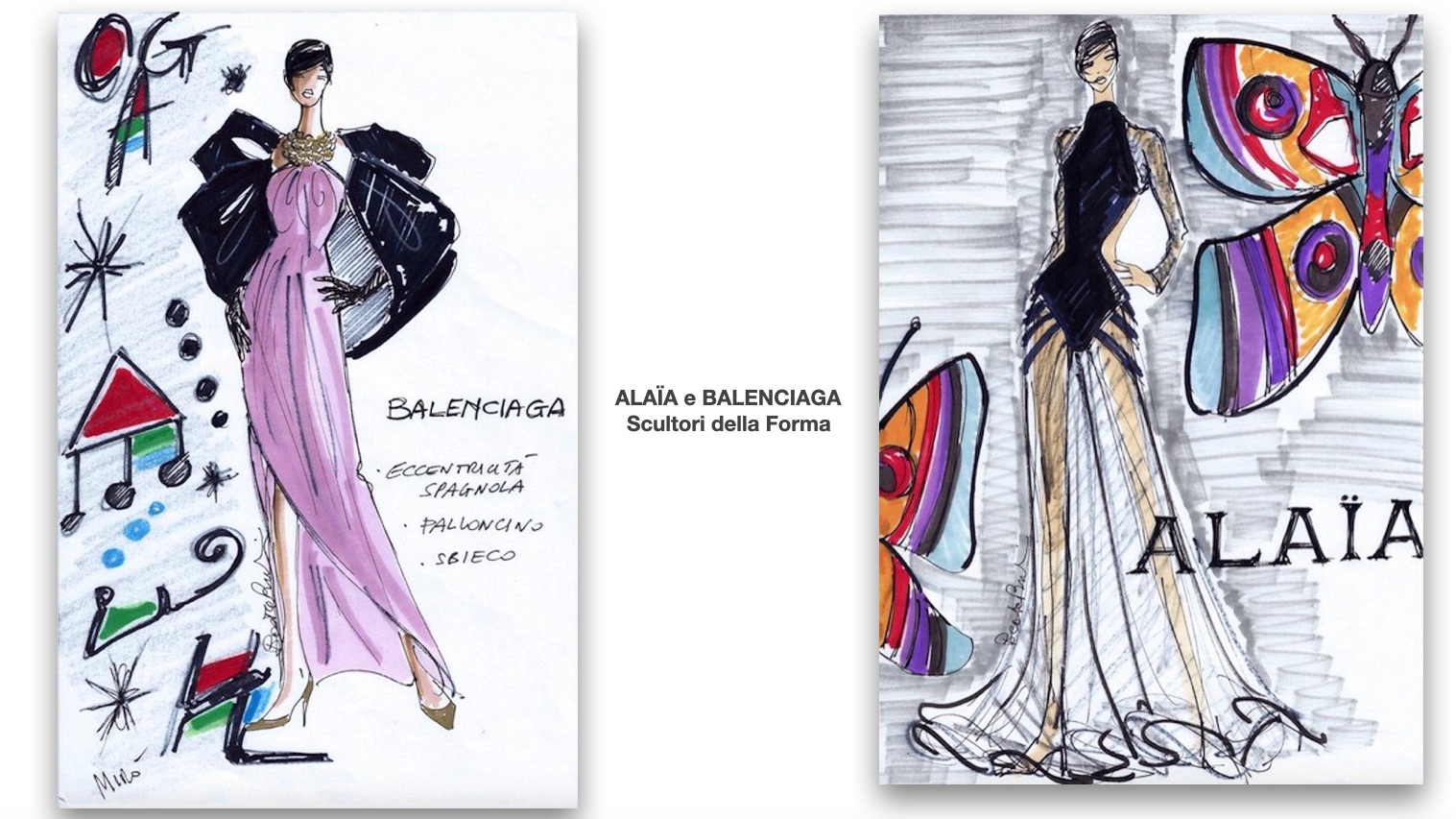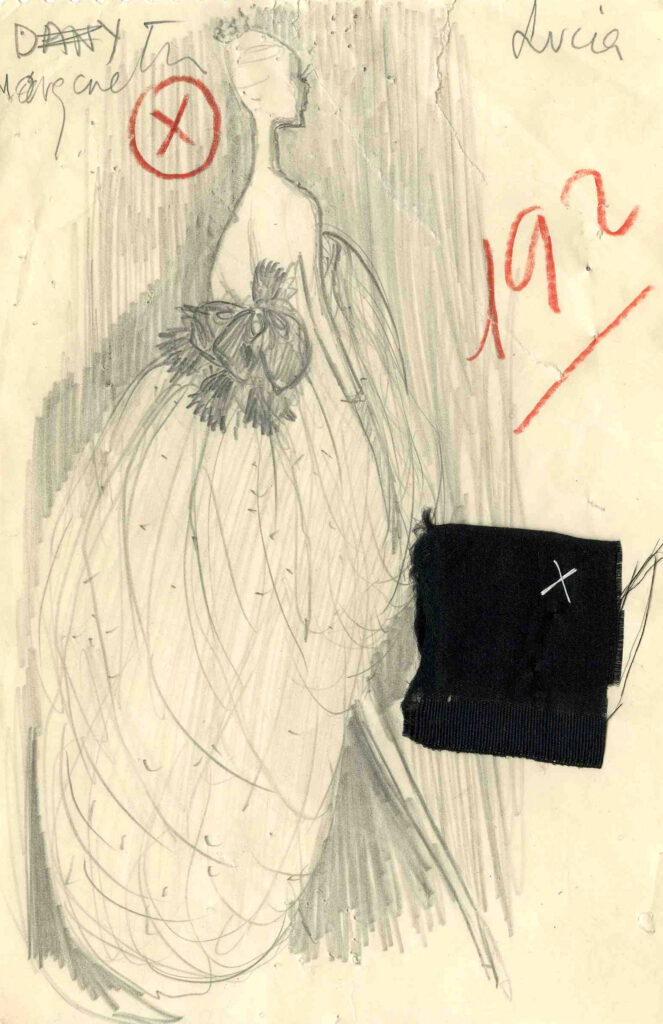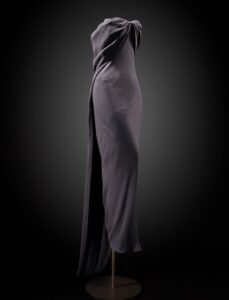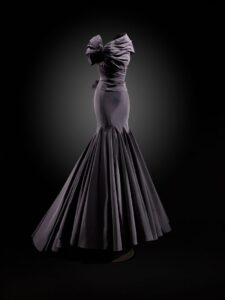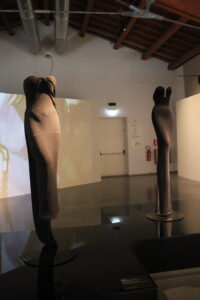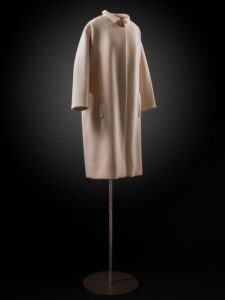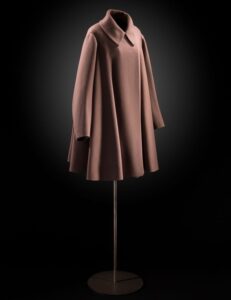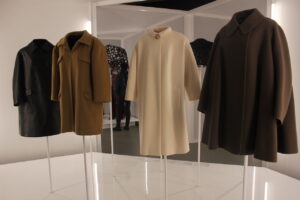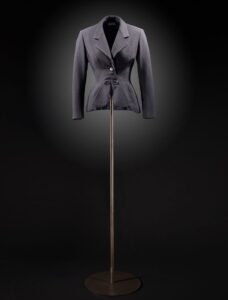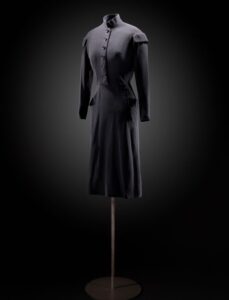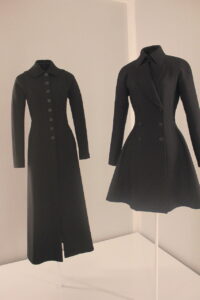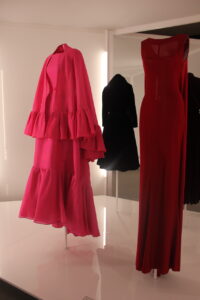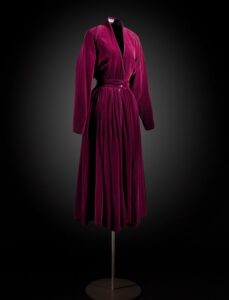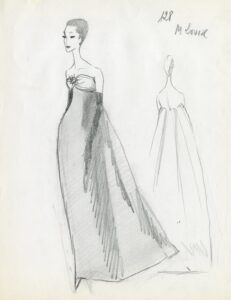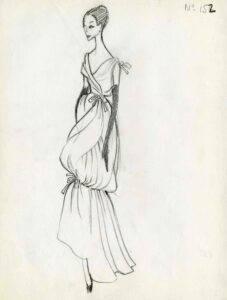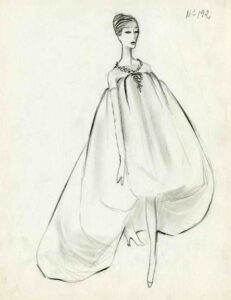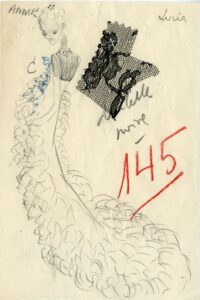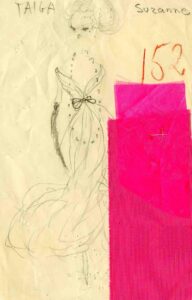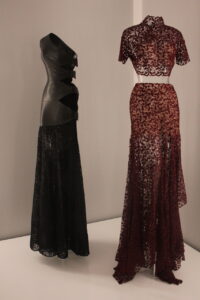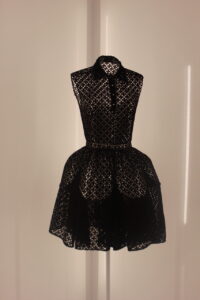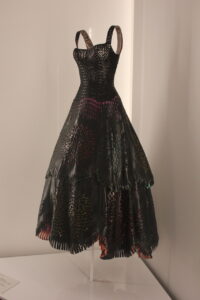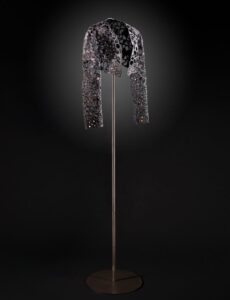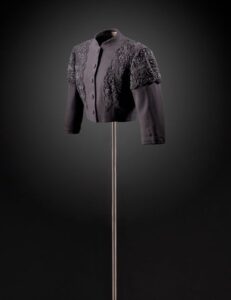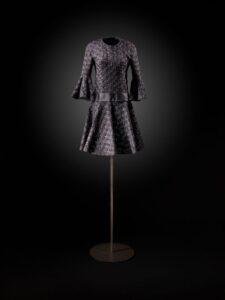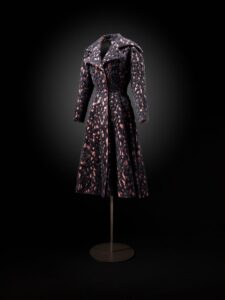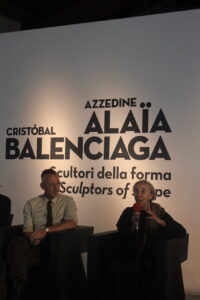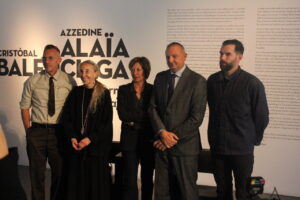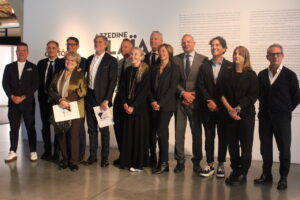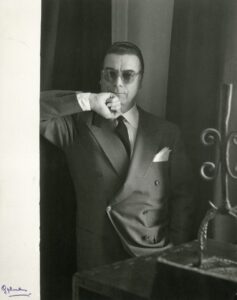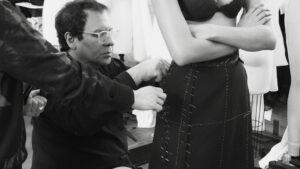Two creations by Alaïa and Balenciaga from the book Icon Vintage Dress by Beatrice Brandini.
Balenciaga sketch from 1958. Balenciaga Archives Paris
From today, October 25, until May 3, 2026, the Museo del Tessuto in Prato presents a very important exhibition: Azzedine ALAÏA, Cristóbal BALENCIAGA Sculptors of Form, featuring two extraordinary artists who celebrate elegance and femininity, enhancing women like few others have ever done.
Cristóbal Balenciaga FW 1960 Haute Couture. Azzedine Alaïa FW 2003 Couture
Glimpse from the exhibition Azzedine ALAÏA, Cristóbal BALENCIAGA, Sculptors of Form
On the occasion of its fiftieth anniversary, the Prato Textile Museum Foundation, in collaboration with the Azzedine Alaïa Foundation in Paris, presents a special exhibition dedicated to two absolute icons of French fashion, for the first time in Italy.
Balenciaga Haute Couture Coat S/S 1968 Alaïa Coat F/W 2012 Collection
The two coats in a glimpse from the exhibition Azzedine ALAÏA, Cristóbal BALENCIAGA Sculptors of Form
The exhibition, curated by Olivier Saillard, compares the creativity of two great couturiers with 50 garments from the Azzedine Alaïa Foundation (of which Carla Sozzani is president) and original documents and videos from the Balenciaga Archives.
Two models by Cristóbal Balenciaga
Glimpse of the exhibition Azzedine ALAÏA, Cristóbal BALENCIAGA Sculptors of Form
The exhibition opens with two stunning evening dresses: a long, sleeveless, fitted black jersey gown designed by Azzedine Alaïa for the Fall/Winter 1988 Haute Couture collection, and another equally extraordinary gown with a black cloqué silk train and draped bust, designed by Cristóbal Balenciaga for the Fall/Winter 1960 Haute Couture collection.
View of the exhibition: Azzedine ALAÏA, Cristóbal BALENCIAGA Sculptors of Form. Alaïa Dress, Collection A-I, 1988
The exhibition then unfolds into three distinct themes: Atelier Tailleur, Atelier Flou, and Spain. The first two refer to the division into departments within the great French tailors, where on one side more structured garments such as coats, jackets, and frock coats were created (Tailleur), and on the other daywear, cocktail dresses, and evening dresses, but created with flowing, soft fabrics (Flou). Finally, with Spain, the aim is to highlight the folklore of this land, especially its flamenco, in which boleros, lace, and trimmings are the main performers.
Cristóbal Balenciaga sketches from 1959, 1957 and 1958 Balenciaga. Archives Paris
Sketches by Cristóbal balenciaga from 1961 and 1957. Balenciaga Archives Paris
The exhibition was born, as Carla Sozzani herself explained at the press conference, from a desire of Hubert de Givenchy, a passionate admirer of Balenciaga and Alaïa, who wanted to bring these two great talents together in an exhibition. Unfortunately, he was unable to realize that dream; Givenchy passed away a few weeks after that famous meeting at the Alaïa Foundation. But the idea and their affection for Mr. Hubert inspired Carla Sozzani and Olivier Saillard to make it a reality a few years later.
Glimpse of the exhibition Azzedine ALAÏA, Cristóbal BALENCIAGA Sculptors of Form. Dresses by Azzedine Alaïa
I was deeply struck by the anecdote told by Sozzani in which she explained that Alaïa, having recently arrived in Paris, with many dreams and hopes, but little means, was introduced to the Balenciaga atelier that had just closed. The idea was to acquire fabrics, even through pre-made garments, and then discard them. But when the very young Alaïa first saw the Spanish master’s creations, not only was he incapable of destroying anything, but he soon became a collector and perhaps one of his greatest admirers.
Bolero Alaïa Couture A-I 1989. Bolero by Balenciaga Haute Couture 1940
The exhibition also features 12 original drawings by Balenciaga, dating between 1950 and 1968, from the Balenciaga Archives in Paris. These are pieces of history, never before exhibited in Italy, where we can admire, along with sketches, fabric snippets, and photos of the garments made and worn, a way to more deeply understand (and LOVE) the Spanish designer’s creative process.
Balenciaga Haute Couture Cocktail Dress, 1968. Balenciaga Coat, F/W 1948
I already dedicated a post to Alaïa and Balenciaga in 2015 (here are the links for those who want to find them: https://www.beatricebrandini.it/azzedine-alaia-the-sculptor-of-fashion-that-makes-women-sirens/?lang=en https://www.beatricebrandini.it/balenciaga-the-fashion-designer-who-sought-real-elegance/?lang=en ) because you can’t love fashion and its history without thoroughly understanding the work of both.
Press conference, from left: Olivier Saillard and Carla Sozzani.
Olivier Saillard, Carla Sozzani, Fabia Romagnoli, Filippo Guarini and Gaspard de Massé. In the right pictures all partners and contributors of this exhibition
Balenciaga was an extraordinary couturier who revolutionized the form; a highly skilled cutter and expert in dress construction techniques, Balenciaga was also an absolute perfectionist, as only great professionals can be. Alaïa, closer to my story because he was more contemporary, was able to make women so beautiful and sensual, preserving their class and elegance, as I believe no one else has been able to do since. When I think of his creations, I think of beautiful women like Yasmeen Ghauri or Naomi Campbell, iconic models who rightfully entered the collective imagination of beauty and culture of the 1990s, I believe also thanks to Azzedine’s creations.
Two talents who, more than any other, knew how to sculpt the female body, two “artisans” of fashion who gave life to marvelous creations, two men who never bowed to the rules of the market, remaining faithful and rigorous to the love of their life, fashion!
Portrait of Cristóbal Balenciaga. Balenciaga Archives Paris
Portrait of Azzedine Alaïa. Azzedine Alaïa Foundation Paris
The venue is the Textile Museum in Prato, from October 25, 2025, to May 3, 2026, curated by Olivier Saillard.
Visit it because it’s a truly extraordinary exhibition.
Enjoy your life!
Beatrice


